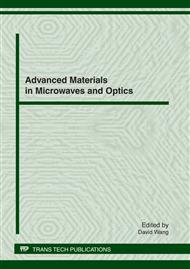p.569
p.574
p.579
p.586
p.592
p.598
p.603
p.609
p.616
Monitoring in Dynamic Change of Desertification in the Region of Central Asia Based on NOAA/AVHRR Image
Abstract:
There are rather large parts of deserts and semi deserts in central Asia, belonging to the region of drought and semi-drought, with little annual precipitation and sharp change of daily and seasonal temperature change. This region is the concerning ecological fragile region in the study of global environmental change. The paper analyzed the landscape characteristics of desertification and soil desertification in the study area, as well as their relationship Based on the high-resolution TM image. And then, the 1km spatial resolution NOAA/AVHRR image was used to acquire the normalized difference vegetation index (NDVI). The vegetation coverage was estimated to ensure the monitoring index of desertification. The NDVI graph was overlapped with the image to set up the interpretation relationship between the ground objects and remote sensing features, on the basis of the relevant technique standards of desertification monitoring, its classification method, as well as the actual conditions. From the desertification interpretation, the area and degree of desertification could be monitored to analyze the changing trend of desertification in central Asia from 1989 to 2009. The results showed that the monitoring method used in the paper was with high reliability and practicality, which could do quick, macroscopic and timely monitoring of desertification in the region of central Asia.
Info:
Periodical:
Pages:
592-597
Citation:
Online since:
January 2012
Authors:
Price:
Сopyright:
© 2012 Trans Tech Publications Ltd. All Rights Reserved
Share:
Citation:


